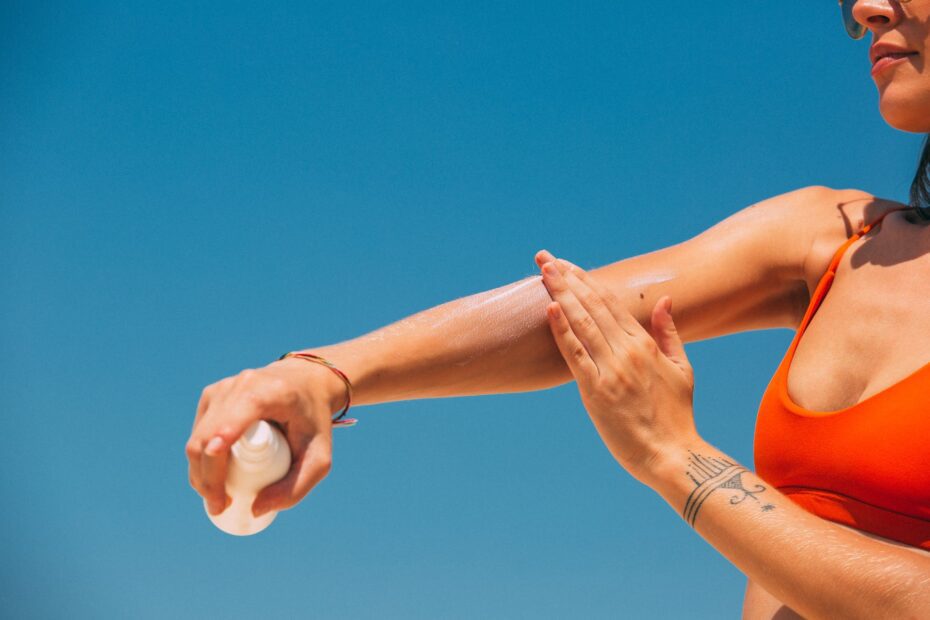Are you tired of dealing with the discomfort of chafing? Look no further! In this article, we will unveil the top 10 remedies for chafing that dermatologists swear by. These tried and tested home remedies are not only effective but also safe to use, with no side effects. So, let’s dive in and discover the smooth relief you’ve been longing for!
1. Wear Appropriate Clothing: Opt for breathable fabrics and avoid tight-fitting clothes that can aggravate chafing. Moisture-wicking materials are your best bet as they keep your skin dry and reduce friction.
2. Keep the Affected Area Clean and Dry: Maintaining good hygiene is essential for chafing relief. Gently clean the affected area with mild soap and water, then pat it dry. Avoid rubbing or scrubbing the skin to prevent further irritation.
3. Stay Hydrated: Drinking plenty of water helps keep your skin hydrated and less prone to chafing. Remember, prevention is key!
4. Use Anti-Chafing Balms or Creams: Apply a thin layer of anti-chafing balms or creams to the affected area. These products create a protective barrier and reduce friction, providing instant relief.
5. Try Natural Remedies: Aloe vera gel, coconut oil, and chamomile tea bags are known for their soothing properties. Apply aloe vera gel or coconut oil to the affected area, or place chilled chamomile tea bags on the chafed skin for quick relief.
6. Use Cornstarch or Baby Powder: Dusting cornstarch or baby powder on the affected area helps absorb moisture and reduce friction. This simple remedy can work wonders!
7. Opt for Loose-Fitting Undergarments: Tight underwear can worsen chafing. Switch to loose-fitting undergarments made of breathable fabrics to minimize friction.
8. Take Warm Baths with Epsom Salt: Soaking in a warm bath with Epsom salt can provide relief from chafing. The salt helps reduce inflammation and soothe irritated skin.
9. Avoid Excessive Moisture: Excessive sweating can exacerbate chafing. Use absorbent towels or talcum powder to keep the affected area dry throughout the day.
10. Give Your Skin Some Rest: If possible, allow the chafed skin to breathe by wearing loose clothing or going commando. This will prevent further irritation and promote healing.
Remember, everyone’s skin is different, so it may take some trial and error to find the remedy that works best for you. Be patient and persistent in your quest for smooth relief!
Wear Appropriate Clothing
When it comes to preventing chafing, wearing appropriate clothing is key. Choose breathable fabrics that allow air to circulate and prevent sweat from accumulating. Avoid tight-fitting clothes that can rub against your skin and cause friction. Opt for moisture-wicking materials that help keep your skin dry, reducing the chances of chafing. These fabrics draw moisture away from your skin, preventing it from becoming irritated. Look for clothing made of materials like cotton, bamboo, or synthetic blends specifically designed for moisture management.
Additionally, consider the fit of your clothing. Loose-fitting garments provide more room for movement and reduce the likelihood of chafing. If you’re engaging in activities that may cause friction, such as running or cycling, consider wearing compression shorts or leggings underneath your clothing. These garments provide a layer of protection and can help minimize chafing.
Remember, prevention is key when it comes to chafing. By choosing the right clothing materials and ensuring a proper fit, you can significantly reduce the risk of chafing and enjoy a comfortable experience.
Keep the Affected Area Clean and Dry
Keep the Affected Area Clean and Dry
Maintaining good hygiene is crucial for chafing relief. When dealing with chafed skin, it is important to keep the affected area clean and dry. Start by gently cleaning the area with mild soap and water. Be sure to use a gentle touch, avoiding any vigorous scrubbing or rubbing that could further irritate the skin.
After cleaning, it is essential to pat the area dry gently. Avoid using a rough towel or rubbing the skin, as this can cause additional friction and discomfort. Instead, opt for a soft, clean towel and gently pat the area until it is completely dry.
By keeping the affected area clean and dry, you create an environment that is less prone to irritation and friction. This promotes faster healing and provides relief from chafing. Remember, good hygiene practices are an important part of chafing prevention and treatment.
Frequently Asked Questions
- 1. What is chafing?
Chafing is a skin irritation that occurs when there is repetitive friction between the skin and clothing or skin against skin. It often leads to redness, soreness, and sometimes even blisters.
- 2. What are the common causes of chafing?
Chafing is commonly caused by excessive moisture, tight clothing, repetitive movements, and friction. Activities like running, cycling, and walking for long periods can also contribute to chafing.
- 3. How can I prevent chafing?
To prevent chafing, it is important to wear appropriate clothing made of breathable fabrics. Avoid tight-fitting clothes and opt for moisture-wicking materials. Applying a lubricant or anti-chafing balm to prone areas can also help reduce friction.
- 4. What are some home remedies for chafing?
There are several effective home remedies for chafing relief. Some popular options include applying aloe vera gel, coconut oil, or petroleum jelly to the affected area. Taking warm baths with oatmeal or baking soda can also provide soothing relief.
- 5. When should I seek medical help for chafing?
If the chafed area becomes infected, shows signs of pus, or if the pain and inflammation worsen despite home remedies, it is advisable to consult a dermatologist for proper evaluation and treatment.


Keith is originally from Truckton, Colorado. The 54-year-old cared for his overweight wife for many years. Keitch is also a freelance editor at antichafing.net and supports the team as a competent advisor. In his spare time Keith enjoys reading books, visiting his homeland and is a passionate product tester for well-known manufacturers.

